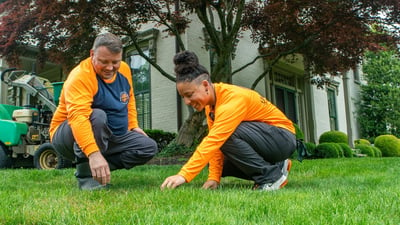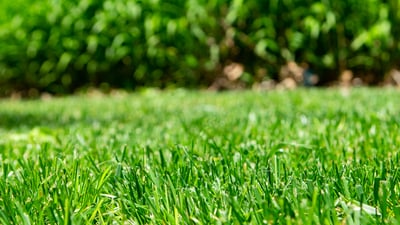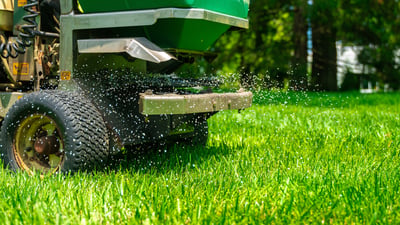

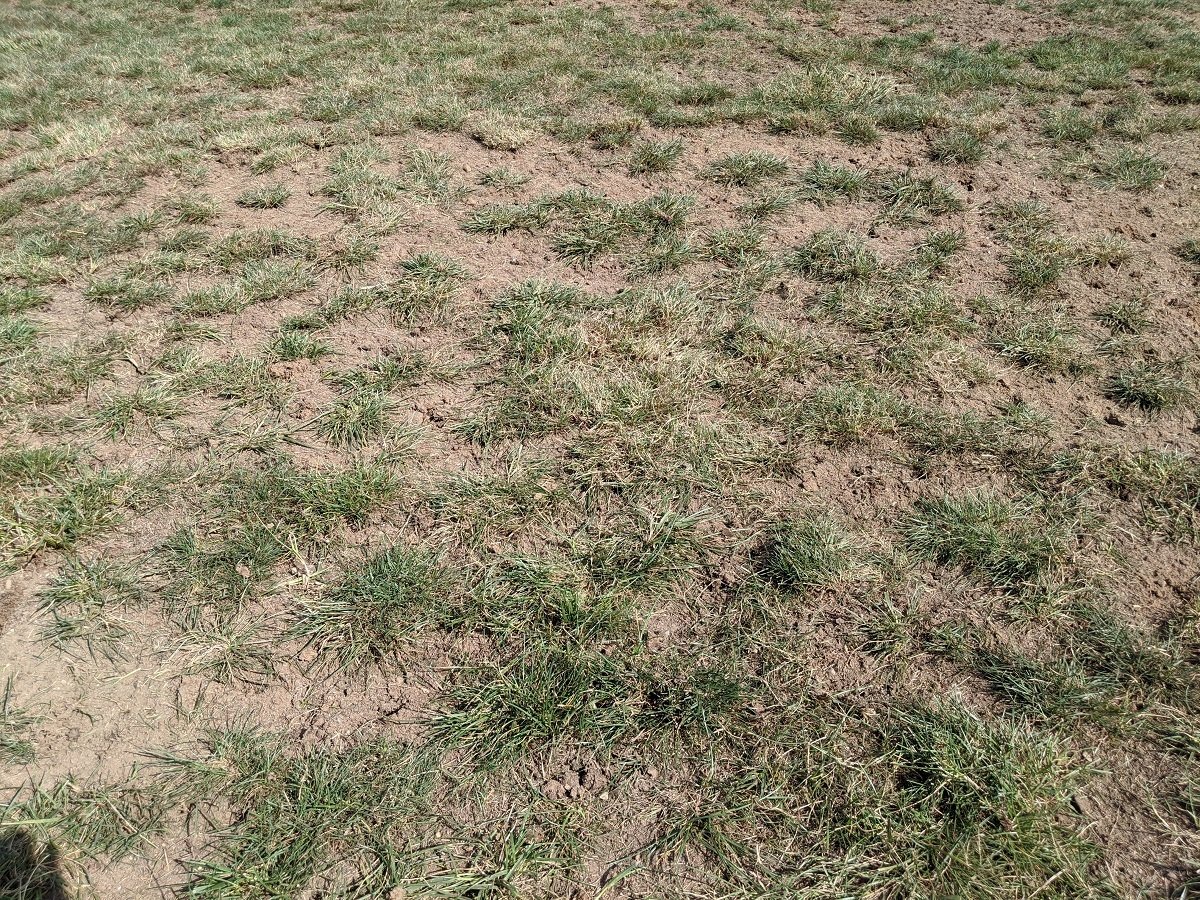
Over the summer, even the healthiest lawns can take a beating. Both drought and heat stress can really take a toll on your turf and by the fall, you might be looking for ways to revive grass after a hot summer.
The fall is the perfect time for lawn recovery. With temperatures cooling down and rainfall increasing, the conditions are better for your lawn to bounce back.
In this article, we’ll share some important lawn care tips for the fall season.
Jump to:
Fall lawn recovery in Louisville
Common summer lawn damage
How to revive grass after a hot summer
Partnering with a pro for fall lawn recovery in Louisville
Fall lawn recovery efforts are important in order to repair summer damage. As we’ve mentioned, lawns can really take a beating during the summer months.
Your efforts in the fall can help your lawn bounce back.
You’ll also want your lawn to be in better shape headed into the winter months so that it can withstand colder weather conditions. The efforts that you make now will also play a role in how your lawn emerges next spring.
Fall is the optimal time for lawn recovery because of the cooler temperatures and increased moisture levels. This helps support healthy root growth. It’s also a time when your lawn doesn’t have to compete with summer weeds or deal with summer stressors like high temperatures and drought.
Even if your lawn is looking pretty rough coming out of the summer, you might be surprised how much recovery it can experience before winter sets in.
There are some unique challenges posed in the summer that can lead to summer lawn damage. These include heat stress, drought stress, lawn disease, and pest activity.
Let’s talk about each of these and how they can impact your turf.
Heat stress occurs as a result of hot and dry weather (and insufficient water, which can lead to drought stress, which we’ll talk about next). Heat stress first kills the tips of grass blades but can spread throughout the grass. This occurs when the lawn cannot cool itself through the normal transpiration process that occurs.

Drought conditions can have a negative impact on your Louisville lawn. When grass does not receive ample water, it can experience physical stress. A drought-stressed lawn will likely start to wilt and turn brown.
As a mechanism of protection, your lawn may enter a state of summer dormancy. But if drought conditions go on long enough, it is possible for the lawn to die.
Lawn disease is also a common summer problem that can lead to summer lawn damage.
When there are hot temperatures and high moisture, spores can multiply and start to pose problems. If these fungal spores begin to take over, they can spread and cause trouble for your lawn.
Some of the most common grass diseases in Louisville, KY include Brown Patch, Dollar Spot, and Red Thread.

Lawn pest activity also tends to ramp up in the summer months. Warmer temperatures can accelerate insect lifecycles and infestations can occur. Many pests first come out in the spring and then reach their peak numbers in the summer months. When lawns are already struggling from heat and drought stress, pest damage can take a serious toll.
While it can be frustrating to see the summer take such a toll on your lawn, there are ways to revive grass after a hot summer.
Some of the key fall lawn care tasks that we recommend include lawn aeration and overseeding (or power seeding), fertilization, and a proper watering schedule.
Let’s talk about why these are important for Louisville lawn restoration efforts following a damaging summer.
Lawn aeration coupled with overseeding can be a great way to revive grass grass after a hot summer. Because Louisville’s soil is predominantly clay, it becomes compacted pretty easily. Clay soil has small pore space to begin with and when it becomes compacted, it’s very difficult for not only oxygen but also water and nutrients to move toward the subsurface levels where they’re needed most.
When the lawn is aerated, holes are made throughout the lawn to help break up compaction. The cores of soil that are left behind on the lawn once the holes are made are also important. Homeowners don’t always realize that leaving these pieces of soil (also called “plugs”) is part of the process. That’s because they will naturally break down and decompose, adding nutrients back into the soil. This helps to further loosen the soil and improve compaction and overall soil quality.
After aeration, the lawn is then overseeded with grass seed. The seed will fall into the holes, providing seed-to-soil contact so that germination can begin. New grass will grow, helping to fill in bare spots that might be left behind from a tough summer.

If your lawn is really struggling after summer, and large areas have died off, an aeration might not be enough. If you need a total Louisville lawn restoration, then power seeding might be your best course of action.
Power seeding, which has also been called “slice seeding” or “slit seeding,” is the process of using a machine to cut rows into the soil and plant seeds. It’s a service used by golf courses to achieve some of the thickest, healthiest turfs around.
With power seeding, the cutting of the soil and the planting of the grass seed are all methodically completed in a mechanical way so that you know your grass seed is actually being planted in the ground. It’s a much more intensive process, but for a lawn that needs to be fully restored, it’s a great option.
Following some brutal summer months, there’s a good chance that your lawn might be depleted of nutrients. That’s why late summer and fall fertilization services are so important.
Fertilizer supplies your grass with essential nutrients — especially nitrogen — which fuels lush, green growth. It also strengthens your lawn’s root system, helping it resist weeds, drought, and disease. At Limbwalker, we apply fertilizer at all six of our lawn care visits.

Watering while your lawn is in fall recovery is important. Consistent moisture helps support deeper root development and greener grass, as your lawn works to bounce back from the summer months.
Lawns typically need around 1 to 1.5 inches of water per week from rain or irrigation. In the fall, rainfall will likely increase. But if Mother Nature isn’t cooperating, you’ll need to supplement with watering — especially in sunny or sloped areas.
A good rule of thumb: Water deeply, but less frequently. This encourages roots to grow down into the soil, rather than staying shallow and weak.

While there’s no question Louisville summers can be tough on lawns, there are steps that you can take for successful grass rejuvenation in the fall. Often, homeowners are frustrated coming out of the summer months. But they’re pleasantly surprised to see how much their lawn can recover.
A key to your success will be partnering with a lawn care professional who can help you make the best choices and also provide high-quality lawn care services for your turf.
At Limbwalker, we believe a partnership will help you to have the best possible results. We can help provide services that will keep your lawn in optimal health…and also help it recover from summer conditions. And we can also offer helpful lawn care tips for the fall, and beyond.
At the end of the day, all of this adds up to increased confidence and peace of mind. While the summer can be a really challenging time for your lawn, you’ll have an expert on your side.
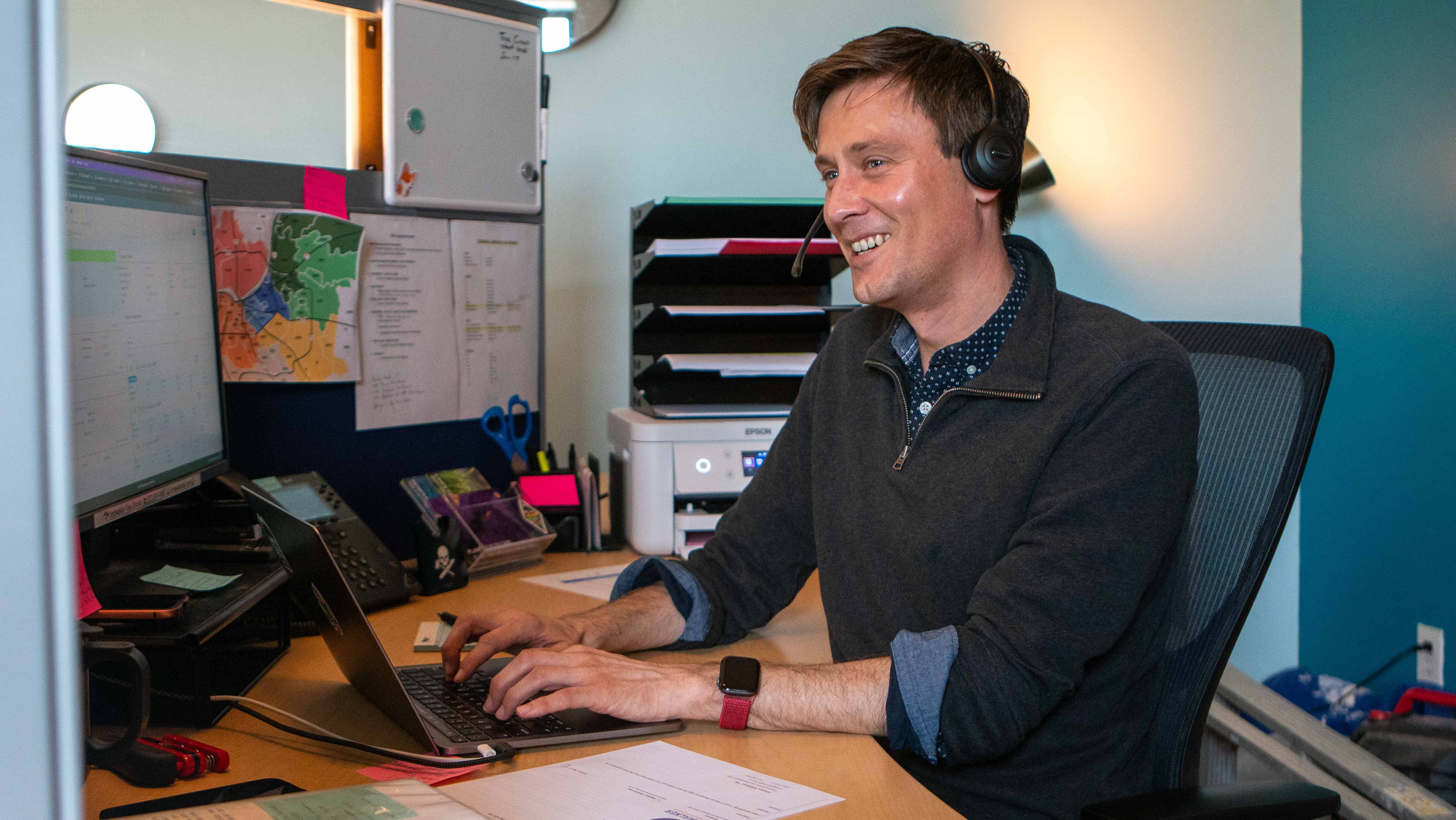
At Limbwalker, we offer three lawn care program options tailored to fit your needs, budget, and lawn goals. Whether you want deep green color, maximum weed control, or all-in-one seasonal support, we’ll build a plan that works for you.
Request a quote today and take the first step toward a lawn you’ll love coming home to.


